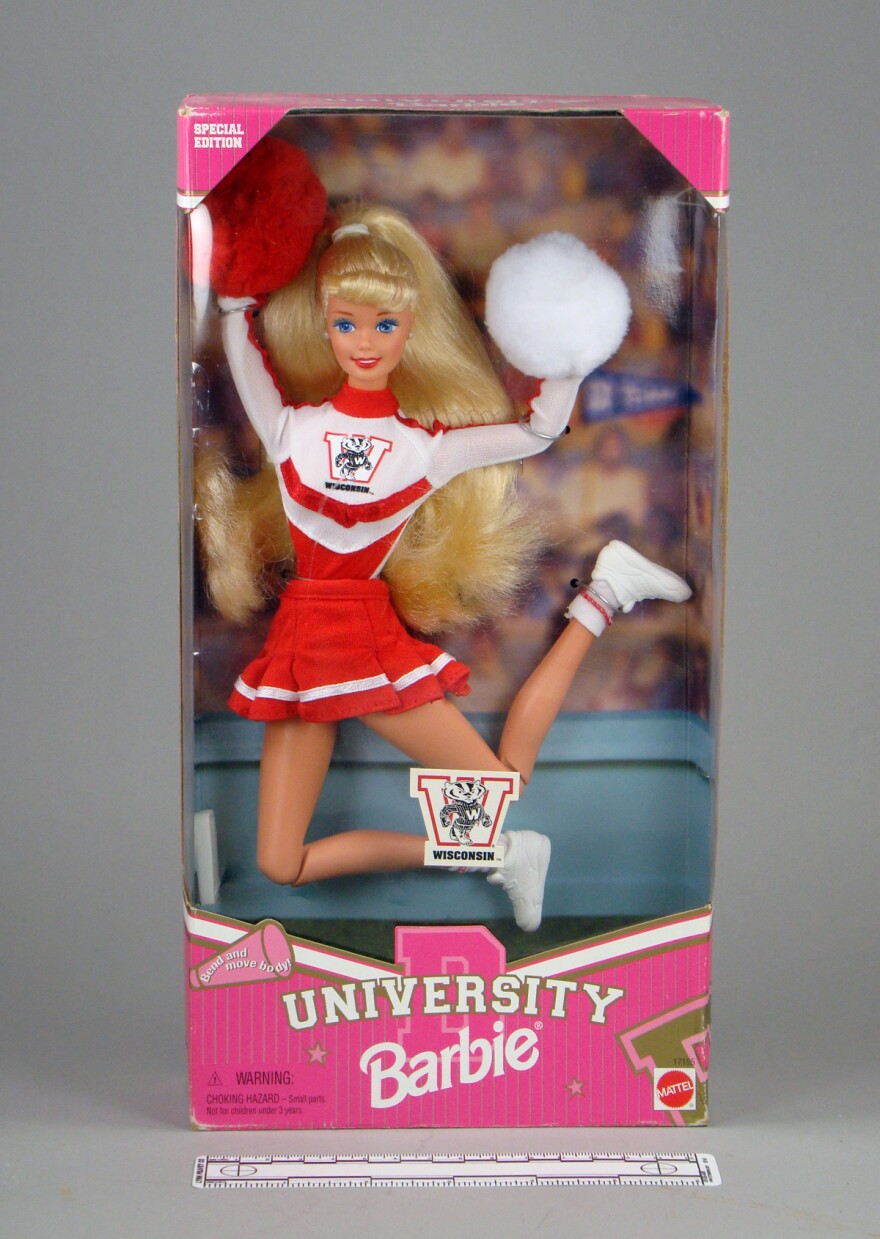The Barbie movie directed by Greta Gerwig has become the highest-grossing domestic film of 2023. Pretty much every week since its opening, it has broken some kind of record and today is Warner Brothers’ best domestic release in history.
With renewed attention on Barbie, we thought we’d learn more about her and the doll’s Wisconsin roots.
The opening scene of the Barbie movie is a clever mirroring of the beginning of Stanley Kubrick's iconic film 2001: A Space Odyssey.

Sporting a black and white striped bathing suit, blonde hair pulled back in a ponytail, heels and a pair of white sunglasses, the Barbie introduced in this scene was what the original Barbie doll looked like when it was introduced at the International Toy Fair in 1959.
If you want to see a similar doll model, the Wisconsin Historical Society has one in their collection. The model they have is from 1961. It's slightly different — the original 1959 doll has gold hoop earrings and the one at the Wisconsin Historical Society has pearl earrings.

According to Abbie Norderhauh, the director of acquisitions and state archivist for the Wisconsin Historical Society, the Barbie in their collection is from a family in Oshkosh, Wis. Orville and Frances Fox bought the Barbie, along with a carrying case and some accessories, for their granddaughter Beth Fox to play with at their home when she would visit from Madison.
Turns out, Barbie also has Wisconsin roots herself. She's from the fictional town of Willows, Wisconsin. "That was confirmed in a series of books published by Random House starting in 1960, where it was confirmed that Barbie graduated from high school in Willows," notes Norderhauh.
She adds that Barbie's story has changed a bit over the years — in a Barbie Dream House Adventures television program, the story changed that Barbie moved from Willows when she was eight years old to settle in Malibu, California.
While we don't know exactly where Willows, Wisconsin is meant to be, Norderhaug says, "The idea that Ruth Handler had when she created the Barbie doll was that every girl should be able to see herself in Barbie. So centering Barbie in the Midwest and in a small town makes her very accessible."
Barbie debuted to mixed reviews. When she was introduced, most dolls were baby dolls aimed at young girls to play caretaking. However, Handler wanted a toy for girls that allowed them to look beyond being a mother. "Having Barbie as an adult rather than a child made little girls think about their future and think about what they could be when they grow up," explains Norderhaug.
While Barbie has had plenty of careers in her lifetime, Barbie's first career was as a teenage fashion model. And Barbie outfits could be purchased individually versus having to buy a whole different dolls. "Her idea was that making the clothing interchangeable and selling it separately would really allow for more avenues of play," notes Norderhaug.
The Barbie in the Wisconsin Historical Society collection has a few other party dress style outfits, but also some homemade clothing. "It used to be so much more common for people to sew their own clothing ... and we see that in our collection as well."

Norderhaug says she's always had a soft spot for Barbie, since she played with them growing up. She loves how the Barbie in their collection tells the story of childhood from 1961 and still connects so well to childhood today.
"It shows how Beth Fox was playing with her doll. If you look at the Barbie, her hair's in a French braid, she's had her clothing changed, so you can see that this Barbie was used and played with. And it really shows how Beth interacted with her and how she enjoyed that doll, and I think that when you look at Barbies today you still see that kids are using them to play and tell stories," says Norderhaug.

_






